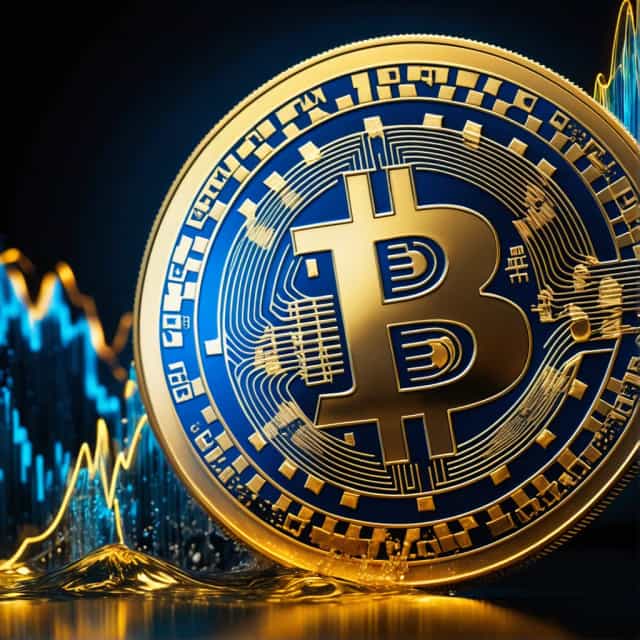
Image source: Block Media
Surge in Stablecoin Transactions in Brazil: Tax Avoidance and Regulatory Challenges
Stablecoin adoption is witnessing exponential growth in Brazil, driven significantly by strategies to circumvent a recent surge in financial transaction taxes targeting overseas payments and foreign currency purchases. This trend underscores the role of stablecoins in the broader context of global digital asset utilization and sheds light on the evolving regulatory landscape in the country.
The Steep Tax Hike: A Catalyst for Stablecoin Adoption
The Brazilian government recently increased the Imposto sobre Operações Financeiras (IOF), a financial transaction tax applied to overseas payments and foreign currency exchanges, from 1.1% to 3.5%. This threefold tax hike, reported by Valor Economico on October 24, has had profound implications for transactions involving traditional payment methods.
Faced with this financial burden, many Brazilian citizens are turning toward stablecoins as a cost-effective alternative for cross-border payments and currency exchanges. Unlike conventional fiscal channels, stablecoins provide users with a tax-free workaround while offering efficient, fast, and decentralized financial transactions.
A Rise in Stablecoin Trading Volumes
Digital asset exchanges in Brazil have reported a significant surge in stablecoin transactions, substantiating citizens' growing preference for these assets. Biscoint, a leading platform for digital asset trading, revealed that stablecoin trading volumes have skyrocketed by 78% year-over-year, climbing from $9.84 billion (approximately 14 trillion KRW) last year to $13.74 billion (around 20 trillion KRW) this year. Similarly, BitBanc noted a sharp spike in activity, stating that stablecoin trading volumes had jumped 36% in just one month, between June and July.
This substantial growth in trading volume highlights a marked shift in consumer behavior, with more Brazilians leveraging stablecoins to bypass IOF taxes and retain greater value from their international transactions.
Exploiting Regulatory Loopholes
The meteoric rise in stablecoin use in Brazil is largely due to a glaring loophole in the nation’s regulatory framework. Under existing Brazilian law, stablecoins are not officially classified as foreign currency. This omission effectively exempts them from IOF taxation during overseas transactions or foreign currency purchases. Consequently, stablecoins have emerged as a potent solution for individuals and businesses seeking relief from the financial strain imposed by the elevated tax rates.
However, the rapid adoption of stablecoins as an unofficial tax avoidance tool raises critical questions about the sustainability and implications for both government revenue and the domestic financial system.
Central Bank’s Response to the Growing Trend
The Brazilian government is aware of the challenges posed by the rising use of stablecoins and is moving to address key gaps in its regulatory framework. The Central Bank of Brazil is reportedly drafting new guidelines to regulate international transactions conducted through digital assets denominated in foreign currencies. These measures are expected to delineate clear requirements and conditions for the use of stablecoins in cross-border payments.
The bank also emphasized that taxation remains under the purview of the Receita Federal do Brasil (RFB), the country’s Federal Revenue Service. An inter-agency collaboration may be required to strike a balance between curbing tax avoidance and enabling continued growth in the digital asset ecosystem.
Perspectives from Industry Leaders and Experts
The IOF tax hike poses both opportunities and risks. Experts argue that while an increased tax rate may generate short-term revenue for the government, taxing digital asset transactions comes with significant enforcement challenges. The inherent decentralized nature of these transactions and high levels of user anonymity complicate compliance protocols, creating what some analysts describe as a "double-edged sword" for policymakers.
Industry stakeholders are keeping a close watch on the Central Bank of Brazil’s actions. On one hand, overly restrictive rules could stifle innovation and curtail the expansion of Brazil’s fast-growing stablecoin sector. On the other hand, balanced policies could lay a foundation for sustainable market growth by fostering investor confidence and mitigating the risks of misuse.
As emerging regulations shape the trajectory of Brazil's stablecoin market, the stakes are higher than ever. Governments globally, including Brazil, are grappling with the disruptive impact of digital currencies on established financial systems. The choices made today will not only determine the direction of Brazil’s financial sector but could also set a precedent for other nations navigating similar dilemmas.
Challenges and Opportunities Ahead
Looking forward, Brazil’s embrace of stablecoins highlights both unprecedented challenges and transformative potential. It underscores the need for regulatory innovation to address real-world financial issues without stifling technological advancement. As the Central Bank of Brazil continues to refine its approach, industry participants and economic experts will play a critical role in shaping the dialogue around digital currency regulation.
The future of Brazil’s stablecoin sector lies at the intersection of economic policy, financial access, and technological innovation. Whether Brazil emerges as a hub for digital asset adoption or faces a contraction in market growth depends largely on collaborative efforts between regulators, economic policymakers, and industry leaders to strike the delicate balance between control and progress.
In the coming years, the trajectory of Brazil’s stablecoin ecosystem could serve as a global case study, illustrating how nations adapt to the complex realities of digital currency and decentralized finance.










